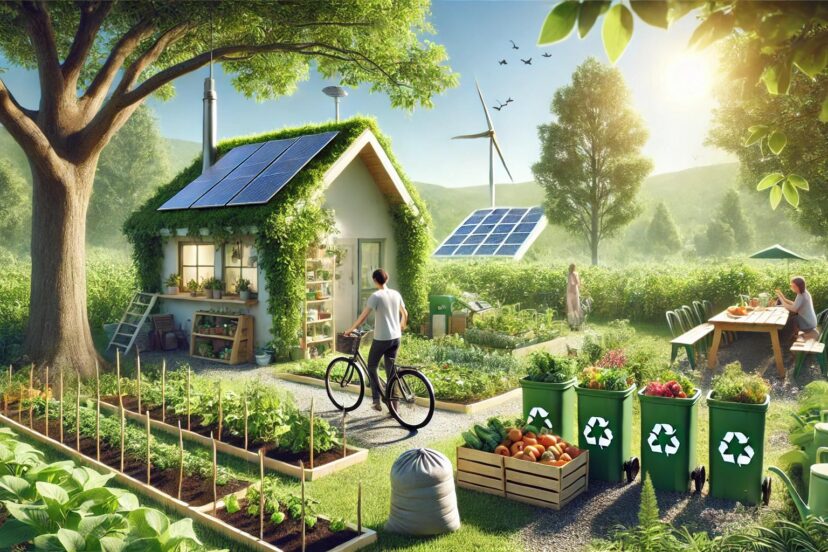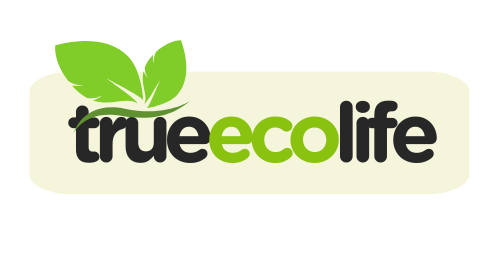Examples of Sustainability: Real-Life Practices for a Better Future
We may earn a commission for purchases made using our links. Please see our disclosure to learn more.
Would you like to contribute to a healthier planet but aren’t sure where to start? Living sustainably can feel overwhelming especially if you don’t have clear and practical examples of sustainability. However, understanding what steps to take can help you kickstart a sustainable lifestyle. In fact, small changes can create a positive impact to a better future. So, here are the examples of sustainability that show us how to make a difference. Let’s get started, shall we?
What Is Meant By Sustainability?
Imagine borrowing something precious with the promise of returning it just as you found it—untouched, pristine. That’s sustainability in a nutshell. It’s about fulfilling our needs today without stealing from tomorrow. Like a symphony, it finds harmony between economic growth, environmental care, and social well-being. And isn’t that what we all want—a world that thrives instead of just survives? These examples of sustainability will make a big impact on Mother Earth.
Why Should You Care About Sustainability?
Picture this: you’re standing in a crystal-clear stream, breathing in fresh mountain air. Now, imagine that disappearing because of carelessness. Sustainability ensures that doesn’t happen. It’s not just an environmental cause; it’s a way to protect life as we know it. When you adopt even a small sustainable habit, you’re part of something larger—a silent revolution, if you will. Doesn’t that give you goosebumps?
Renewable Energy: A Bright Example
Have you ever stood in a field and felt the wind rush past, powerful yet gentle? That’s renewable energy—nature lending us its hand without asking for much in return. Solar panels soaking up sunlight and turbines harnessing the wind’s whispers are beacons of hope. They say, “There’s another way, a cleaner way.” Making the switch to renewable energy seems like a much-needed reprieve for Mother Earth.
Integrating renewable energy into agriculture is a key strategy for achieving sustainability. A comprehensive review titled Renewable Energy and Sustainable Agriculture: Review of Indicators highlights how renewable energy solutions, like solar and wind power, can reduce environmental harm and decrease reliance on fossil fuels. Similarly, the book Advances in Sustainable Energy offers a detailed overview of sustainable energy technologies, showcasing real-world applications and case studies that make this transition feasible. Together, these resources demonstrate the powerful synergy between clean energy and sustainable farming practices.
Sustainable Agriculture: Growing Responsibly
Think about biting into a juicy, sun-ripened tomato, knowing it was grown without harming the earth. That’s sustainable agriculture—farming with love and respect for the soil. Techniques like crop rotation and organic practices help the land thrive, not just survive. It’s the difference between borrowing from nature and stealing from it. Wouldn’t you rather be the borrower?
Recycling and Upcycling: A Second Life
Do you see a tin can as trash or treasure? Recycling gives materials a second chance, while upcycling transforms them into something extraordinary. An old ladder becomes a bookshelf, and a glass jar? Well, it becomes a vase. It’s a creative dance with the things we might otherwise discard. Recycling isn’t just responsible; it’s a reminder that everything and everyone deserves another shot.
Energy-Efficient Buildings
Step inside a green building, and you’ll feel the difference—comfort that doesn’t cost the earth. These marvels are designed to sip energy, not guzzle it. From insulated windows that trap warmth to solar panels soaking up the sun’s rays, energy-efficient buildings are silent champions of sustainability. Living in one feels like giving the planet a hug every day.
Water Conservation: Every Drop Counts
Have you ever watched a single drop of water fall and ripple outward? It’s mesmerizing, isn’t it? Water conservation is the art of saving those precious drops. It’s turning off the tap while brushing your teeth, fixing that leaky faucet, or collecting rainwater in barrels. These little ripples create waves of change, ensuring that future generations don’t face a dry world.
Recommended Sustainable Products to Kickstart Your Journey
Here’s a curated list of eco-friendly products that align with the principles of sustainability. These items not only help reduce your environmental impact but also make living sustainably easier and more enjoyable.
- Eco-Friendly Tote Bags – Perfect for shopping, these bags are durable, stylish, and save countless plastic bags.
- Biodegradable Toothbrushes – Bamboo toothbrushes are a sustainable alternative to plastic ones.
- Solar-Powered Chargers – Charge your devices with clean, renewable energy anywhere you go.
- Energy-Efficient LED Bulbs – Reduce your energy consumption while brightening up your home.
- Organic Cotton Towels – Soft, durable, and made from sustainable materials.
These sustainable products are a small investment in a healthier future for yourself and the planet. Why not start with one today?
Electric Vehicles: Driving Into the Future
Electric vehicles are like silent whispers on the road, gliding past without polluting the air. They’re a promise to the planet—a commitment to cleaner skies and quieter streets. As charging stations bloom and battery tech evolves, EVs are no longer a novelty but a necessity. Driving one feels like holding a small piece of the future in your hands.
Sustainable Fashion: Dressing With Purpose
Do you know the story behind your favorite shirt? Sustainable fashion is about making sure that story isn’t tainted by waste or exploitation. It’s choosing organic cotton, thrifted finds, or brands that treat their workers and the planet with care. Every time you wear sustainable clothing, it’s like saying, “I choose kindness.” Isn’t that a wonderful sentiment to wear?
Local Sourcing: Supporting Communities
Imagine strolling through a farmer’s market, inhaling the scent of fresh produce, and chatting with the hands that grew it. That’s local sourcing—buying close to home and cutting down on unnecessary transport emissions. It’s not just eco-friendly; it’s heartwarming. Every purchase supports your neighbors, turning transactions into connections.
Circular Economy: Closing the Loop
One of the examples of sustainability is the circular economy. Nature doesn’t waste a thing, and neither should we. A circular economy follows nature’s lead, turning yesterday’s products into tomorrow’s resources. It’s about reusing, repairing, and recycling instead of discarding. When you see waste as an opportunity rather than an end, the possibilities are endless. Isn’t it poetic how one ending can spark a new beginning?
Urban Gardening: Greening the Cities
Urban gardening is like giving the city a green heart. It’s rooftop gardens, community plots, and balcony planters transforming concrete jungles into lush havens. Growing your own herbs or tomatoes amidst the hustle and bustle feels like reclaiming a piece of nature. It’s proof that even in the busiest of places, life finds a way.
Minimalism: Less Is More
Minimalism whispers what we often forget—joy isn’t found in things but in experiences. It’s about owning less and appreciating more. You make room for what really important when you let rid of excess. It’s not just a lifestyle; it’s a mindset that aligns beautifully with sustainability. After all, isn’t less clutter just freeing?
Composting: Nature’s Recycling
Composting is like magic—it turns scraps and waste into rich, fertile soil. Every banana peel or coffee ground you compost is a gift back to the earth. It’s nature’s way of saying, “Nothing is ever wasted.” Composting feels like completing a cycle, a satisfying reminder that what we take, we can also give.

Renewable Packaging: Bye-Bye Plastics
Imagine a world without plastic waste—a world where every package is reusable or biodegradable. Renewable packaging makes that dream a reality. Materials like bamboo and cornstarch replace harmful plastics, proving that functionality and sustainability can coexist. Every time you choose it, you’re telling the planet, “I’ve got your back.”
Sustainable Tourism: Travel Lightly
Traveling sustainably is like treading softly on the world. It’s choosing eco-friendly lodgings, reducing your waste, and respecting local cultures. It’s about exploring the wonders of the world without leaving scars behind. When you travel lightly, you carry more than memories—you carry hope for a better tomorrow.
Corporate Sustainability Initiatives
Imagine a world where businesses lead the charge for a greener planet. Corporate sustainability initiatives do just that, using their reach and resources to make impactful changes. From adopting renewable energy to reducing waste, these companies set an example. Supporting them is like casting a vote for the planet.
Education and Awareness: The Power of Knowledge
Knowledge is the seed from which action grows. Teaching examples of sustainability in schools or sharing tips with friends spreads awareness like wildfire. The more we know, the better we can act. Education doesn’t just inform—it inspires, planting ideas that can blossom into movements.
Community Projects: Together We Thrive
There’s something magical about people coming together for a common cause. Community projects like tree planting or neighborhood clean-ups unite people while making a tangible difference and are good examples of sustainability. They remind us that sustainability isn’t just individual; it’s collective. Together, we’re stronger—and greener.
Renewable Fuel Alternatives
Renewable fuels like biofuels show us that energy doesn’t have to come at the planet’s expense. Made from organic materials, they’re a cleaner, more sustainable alternative to fossil fuels. Using them feels like driving innovation forward while leaving pollution behind.
Carbon Offsetting: Balancing the Scale
Carbon offsetting is like hitting the reset button on your environmental footprint. By funding green projects, you balance out the emissions you can’t avoid. It’s a simple, effective way to take responsibility and contribute to global sustainability.
Zero-Waste Lifestyle: The Ultimate Goal
A zero-waste lifestyle is like an art form—challenging but beautiful in its impact. It’s about reducing waste to the bare minimum through reusable products, composting, and mindful consumption. While perfection isn’t easy, the pursuit itself is powerful. Every step toward zero waste matters.
Green Technology: Innovations for Good
Green technology is a marvel—a blend of human ingenuity and nature’s wisdom. From smart appliances to advanced recycling systems, it proves that we can innovate without destroying. Green tech doesn’t just solve problems; it opens doors to a sustainable future.
Rewilding: Let Nature Heal
Rewilding is nature’s way of healing itself, reclaiming lands and restoring ecosystems. It’s reintroducing species, letting forests regrow, and stepping back to let the wild be wild. It’s a testament to the resilience of nature when given a chance.
Simple Steps for Everyday Sustainability
Sustainability isn’t about grand gestures—it’s in the little things. Carry a reusable bag, choose a refillable water bottle, or walk instead of drive. These examples of sustainability are small actions that ripple outward, creating waves of positive change. Every little step you take counts.
In Summary: Small Actions, Big Impact
Sustainability isn’t just about saving the planet—it’s about saving ourselves. It’s the little changes, the daily choices, that build a greener future. Each of us has the power to make a difference. So, what are you waiting for? Follow the examples of sustainability today. The world is ready for your contribution.
FAQs About Sustainability
1. What is the easiest way to start living sustainably?
Begin with simple actions, like reducing waste, saving energy, and recycling. Small habits lead to big changes.
2. How does sustainability benefit the planet?
It reduces pollution, conserves resources, and ensures a healthier environment for future generations.
3. Can a single individual truly make a difference?
Absolutely! Individual efforts inspire others and contribute to collective progress.
4. What’s the role of businesses in sustainability?
Businesses drive large-scale impact through eco-friendly practices, influencing consumers and industries.
5. How can I teach sustainability to my children?
Lead by example, involve them in eco-friendly activities, and explain the importance of caring for the planet.




